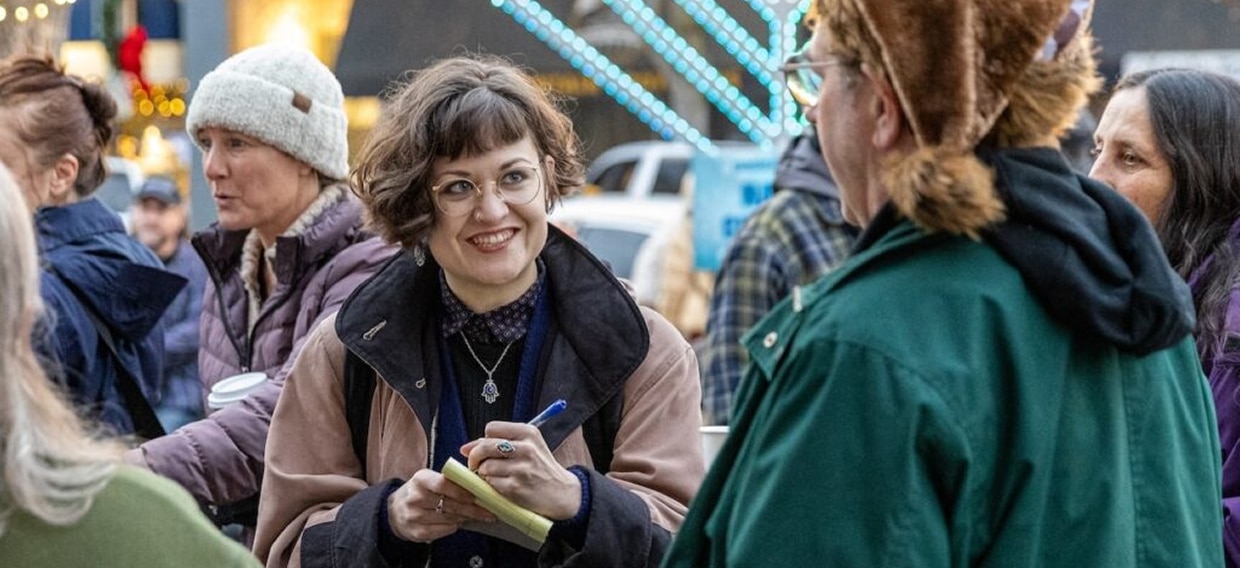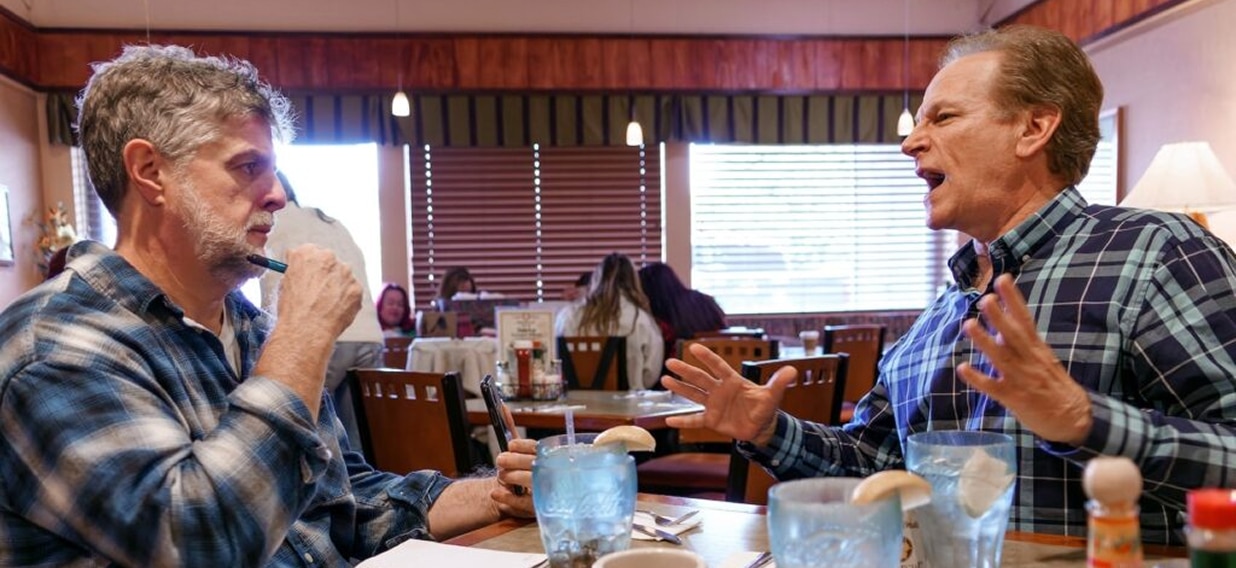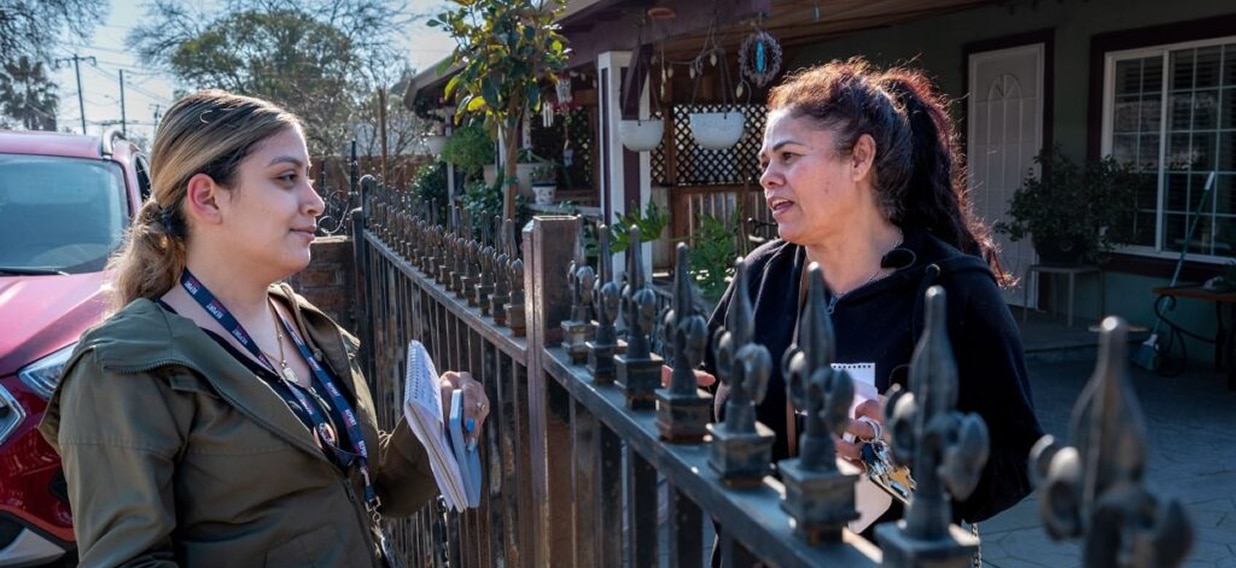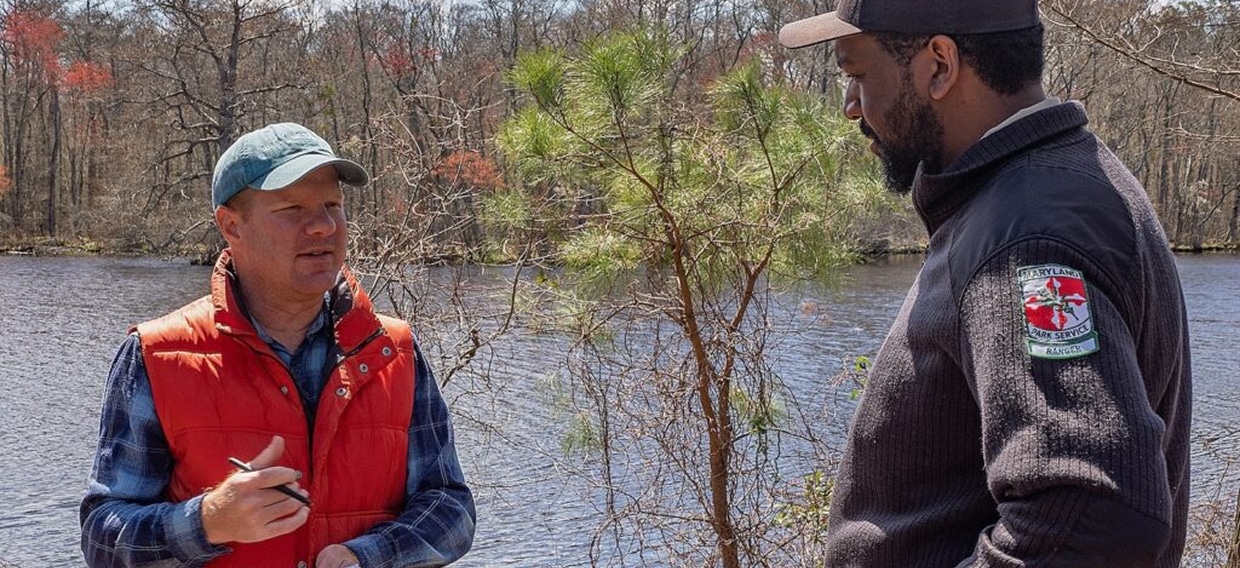Two weeks after a tidal wave of federal workforce cuts under the new Republican administration, reporters at WyoFile got a tip: a century-old fish hatchery in Wyoming was on the verge of losing its entire staff.
Reporter Mike Koshmrl visited the remote Saratoga National Fish Hatchery — an outpost that rears trout and an endangered toad — and found some staff willing to talk, but only under the cloak of anonymity. The reason? Fear of retribution from Washington.
“‘Chaos,’” Koshmrl opens in his WyoFile dispatch. That one word, he writes, is how an employee described the atmosphere at the hatchery since a chilling offer of “deferred resignation” landed in thousands of inboxes across the state — and the U.S.
The story didn’t stop at the hatchery gates. Koshmrl’s reporting stretched across Wyoming’s vast federal lands, capturing the anxiety among U.S. Forest Service employees who manage territory nearly the size of Connecticut — and setting the stage for WyoFile’s follow-up coverage of the Wyomingite nominated to lead the U.S. Fish and Wildlife Service; the very agency under siege.

This is the kind of on-the-ground reporting that makes INN newsrooms, and especially the 80+ outlets in the Rural News Network, key sources of information about the local impact of funding cuts made in Washington, D.C. The onslaught of federal decisions is intentionally overwhelming, but nonprofit newsrooms across the country are illustrating the tangible consequences that people — like scientists in Hawai’i, federal employees in coastal Georgia and local farmers and food bank managers in Vermont — are facing.
Reporting across the network is pinpointing the sometimes insidious ways the federal government is cutting community resources, like how the cancellation of leases for federal offices in Nebraska is affecting landlords, farmers and tourists. The impacts are far-reaching, so newsrooms are engaging multiple reporters across various beats to explain what’s happening, like this robust reporting about community projects in southwest Virginia upended by Congress’s spending resolution. These stories are often told by journalists who live in the regions they report on — or who have spent years cultivating expertise and sources on these issues.
By focusing on the impact of federal decisions on their local communities – especially those traditionally underserved by mainstream media outlets – INN newsrooms are making headlines tangible. And they’re able to do so because of the time and resources they’ve committed to effectively building trust with the communities they serve.

On the very day of the new administration’s inauguration, Civil Eats, the news site focused on the U.S. food system, launched its Food Policy Tracker. The tool keeps daily tabs on decisions about the food system by branches of the federal government.
Civil Eats then uses these updates to report on the impact of those actions on real people, like this article about a Bay Area organization that lost funding from the U.S. Department of Agriculture for training programs that teach farming skills like composting and beekeeping, because they welcomed queer and BIPOC farmers.
Civil Eats founder and executive director Naomi Starkman told INN that the tracker has been well received. In the three months it’s been online, Civil Eats has produced breaking news and been offered exclusive stories. “We’ve gotten positive feedback from readers and experts from around the country, and we are receiving tips about how individuals are being affected by the funding freeze and purge of staff across the government.”
“This is the kind of work that can only be done by a small group of people who have spent many, many years reporting on these topics – with very limited funding.”Naomi Starkman, founder and executive director, Civil Eats
The highly collaborative staff at Civil Eats is well positioned to respond to the onslaught of federal decisions about food and agriculture because for 16 years the newsroom has developed its sources and expertise on communities and topics often ignored in larger newsrooms, Starkman explains.
“This is the kind of work that can only be done by a small group of people who have spent many, many years reporting on these topics–with very limited funding. You can’t parachute in and build the connections and the subject matter expertise to be able to report these stories clearly and credibly.”
At North Carolina Health News, a form embedded in articles about the federal government asks readers to reach out to reporters with answers to the question: “Are you a federal worker, contractor or recipient of federal funds who has been affected by recent cuts? We want to hear from you.”
At Charlottesville Tomorrow, the newsroom’s engagement with the public on the upheaval from the federal government is also built upon a longtime investment in relationships with the community. Readers can reach out via Signal or a secure, online form to share how changes are affecting them, the form says, whether for “good or bad.”

Local residents can also share more personal stories of how they are impacted through the newsroom’s program First Person Charlottesville, a collaboration with Vinegar Hill Magazine and the In My Humble Opinion radio program. In one story, a local Virginian explains how fundamental the federal government’s research funding was in her pursuit of a successful career in science. These stories are edited and fact-checked to journalistic standards, and contributors are compensated for the time they give to the rigorous process.
Local news outlets consistently provide reliable coverage that people trust, so they are key in painting a picture that Americans across the political spectrum can agree upon. According to the Pew Research Center, over two-thirds of U.S. adults surveyed last year (2024) said their local news organizations were doing well in reporting the news accurately (71%) and covering the most important stories (68%). Majorities from both political parties think local media in their area are doing their jobs well.
Charlottesville Tomorrow CEO and Editor-in-Chief Angilee Shah shared with INN that the news site has been taking time to emphasize its guiding principles for readers as they seek explanations for what’s happening around them — especially the value the outlet places on “bringing forward the perspectives of the people most impacted by the issues we cover.”
She says readers have responded well, showing their appreciation for the localized reporting no matter where they stand on the political decisions themselves. One reader wrote in with deep appreciation of a First Person Charlottesville story by the person who ran custodial services at the Federal Executive Institute, which is located in town: “You never, ever hear stories from the perspective of the guy running the janitorial crew at an institution…and I was just bowled over reading it, that Charlottesville Tomorrow would choose to tell that story instead of some of the top down stories that we see elsewhere in this coverage.”
Starkman also emphasized the role Civil Eat’s mission plays in its ability to do this important work well. “Part of what it takes to report on real-life consequences connects to our values as a newsroom: We work with compassion and empathy toward the people in our stories and that means our sources trust it to tell their stories. We prioritize integrity, and we substantiate every claim and seek fair comment from all sides. And we practice intellectual rigor by going deep to tell the whole story and resisting simplification. We have never strayed from our mission, and that strengthens our reporting.”
The fact-based, on-the-ground approach of INN member newsrooms is refreshing. In a media landscape that feels simultaneously flooded with information and siloed by algorithms, engaging with deeply reported, localized storytelling in rural communities across the country highlights the role that government plays in our daily lives. And in so doing, local and rural-focused newsrooms are handing the reins back to the public, empowering us to understand the consequences of this political moment and decide for ourselves what to do about it.






